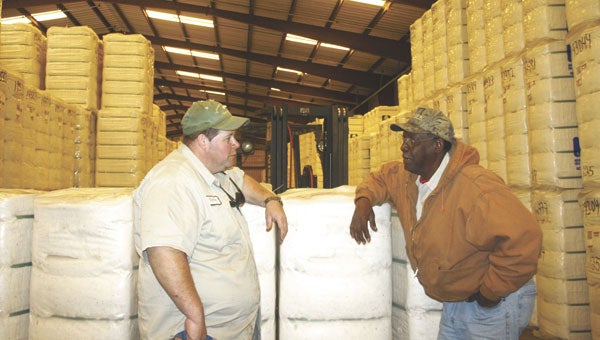High Cotton
Published 12:00 am Tuesday, February 19, 2013
Agriculture and forestry continue to drive the state’s economy – contributing $70.4 billion annually to the state’s economy, and accounting for 22 percent of the state’s workforce, according to a recent study.
“Economic Impacts of Alabama’s Agricultural, Forestry, and Related Industries” was a collaborative effort of the Agribusiness Council, Alabama Cooperative Extension System, Auburn University and other businesses and organizations. The last such study was done in 1989; however, new information revealed that, in addition to remaining Alabama’s largest economic engine, agriculture and forestry are the state’s second largest employer. According to the study, every $1 million in direct sales of Alabama agricultural and timber products generates 10 jobs. Extension System Director Gary Lemme said the report shows how agricultural research, education and outreach pay dividends for the state.
But that’s not news to the employees of Covington Cotton Gin. On Monday, some eight residents were hard at work binding, stacking and loading bundles of cotton.
Joe McDonald, manager, has been involved at the gin since its inception.
He knows just how much of an impact the agricultural industry has on the economy.
“At our peak, which runs from late September to mid January, we’ve got nearly 30 employees running two shifts, 24-hours-a-day, seven-days-a-week,” McDonald said. “Cotton is a big industry, but we’re just one piece of the puzzle.”
In Covington County, nearly each of the state’s areas of agricultural production are recognized, including cattle, poultry, timber, crops and even fisheries.
And while officials said the state’s manufacturing industry has grown at a faster pace during the last 24 years, agriculture and forestry remain the state’s largest economic engine and its second largest employer. One of every 4.6 Alabama jobs are related to agriculture and forestry, the study says.
Timber production and processing lead the way, generating $21.4 billion annually and employing 122,020 people, according to the study. The poultry and egg business pumps $15.1 billion into the state’s economy each year and employs 86,237.
“The main goal of the study is to demonstrate the enormous and often understated presence of this sector, its enduring influence and, most important of all, its immense potential to Alabamians and public policy officials,” Extension System Director Gary Lemme said.
“Traveling through Alabama, you don’t always recognize the huge presence of agriculture and forestry,” Lemme said. “For example, Alabama doesn’t have miles of open fields like other states, and the poultry houses tend to be located beyond principal byways.”
Dr. Deacue Fields, Extension specialist and Auburn University associate professor of agricultural economics, said that agriculture’s reach was immense, just understated and, consequently, misunderstood, if not ignored by millions of Alabamians.
“Many Alabamians don’t know the impact of this industry — how many dollars are actually generated by this sector of the economy,” Fields said. “We not only wanted to account for the reach of this sector beyond the farm gate but also to demonstrate how the dollars generated by this sector are multiplied throughout the state’s economy.”
Among other findings, the study reveals that agriculture generates $10,770 in economic activity for every person in the state. Moreover, every $1 million in direct sales of agricultural and timber products generates 10 jobs.
Lemme said the data compiled in the report not only demonstrates how innovative but also how diverse this sector has become within the last few decades.
“We produce and process a wide diversity of products that not only are consumed here in Alabama but that are exported to every corner of the world, and these are being generated by local agricultural economies that are as multifaceted and innovative as those you will find in many high-tech industrial parks throughout the state,” he said.
The next step, Lemme said, should involve a comprehensive strategy for building on these strengths.
“There is huge potential in these local agricultural economies waiting to be unlocked,” he said. “This is best achieved through a combination of public policy initiatives, investments in research and Extension, and incentives for encouraging young agriculture and forestry producers.”






